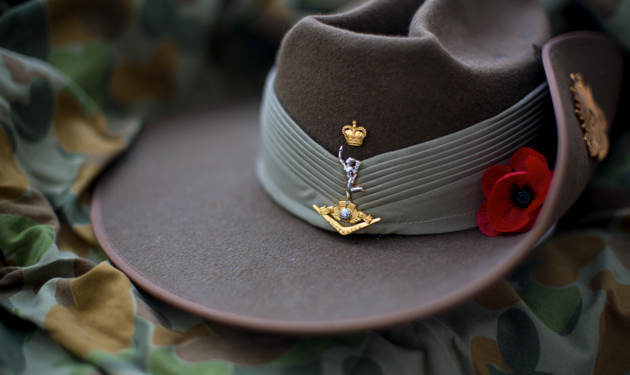
ANZAC stands for Australian and New Zealand Army Corps.
On 25 April 1915 Australian and New Zealand soldiers formed part of the allied mission to capture the Gallipoli peninsula in Ottoman, Turkey in order to open the Dardanelles to the allied navies.
It was around 4.30am when Anzac soldiers approached the peninsula, marking this the start of the Gallipoli Campaign to defeat the Ottoman Empire, and an ally of Germany.
The Gallipoli Campaign was a military defeat. In late December, the Anzacs were evacuated from the peninsula and by 20 January 1916, all Allied troops had been withdrawn.
The battles fought on Gallipoli established the military reputation of the original Anzacs and the pride of the Anzac soldiers continues to this day.
Anzac Day commemorations
On 25 April 1916 the first Anzac Day memorials were held with various ceremonies and services across Australia, a march through London, and a sports day in the Australian camp in Egypt.
Over ten years later, in 1927, Anzac Day was established as a National Day of Commemoration for the 60,000 Australians and 18,000 New Zealanders who died during the war.
Over 100 years later, Anzac Day is still one of Australia’s most important national occasions.
For those new to our country, or those unfamiliar with Australian history, each year millions of Australian residents traditionally gather together at the crack of dawn, similar time when the Anzacs approached the Gallipoli peninsula, to attend a dawn service.
This is just one of the ways we honour the lives of those who have served and continue to serve our country.
This year, due to COVID-19 restrictions, we will find alternate ways to honour our service men and women and keep the Anzac spirit alive.
Honouring the Anzac spirit
This Anzac Day the Department of Veterans’ Affairs encourages all Australians to pause and reflect on the service and sacrifice of over 102,000 Australians who have died during wars, conflicts and peacekeeping operations.
Abiding by COVID-19 restrictions, the Anzac spirit can still be honoured in many ways in lieu of the cancelled traditional commemorations and marches across Australia and overseas.
Anzac Day Ceremony to be broadcast live and online streamed
From the Australian War Memorial, the Anzac Day service will broadcast live, starting with pre-service program from 5am then national service at 5.30am. Check your local TV guides for more details.
Wearing medals
It is important to understand and respect the etiquette of wearing medals if you did not earn them. If you have medals from a relative, you can certainly honour their service by wearing their medals – but these must be worn on your right breast.
Only the person who was awarded or issued medals may claim these as their own and wear them on their left breast. Some veterans may wear medals on both breasts – their own on the left, and a relative’s medals on the right.
Wearing rosemary
Rosemary grows wild on the Gallipoli peninsula and is a symbol of remembrance. It has particular significance for Anzac Day. It is tradition to wear a sprig of rosemary pinned to your lapel, most commonly worn on the left breast and held in place by medals.
Anzac biscuits
Baking Anzac biscuits has long since been an Australian tradition to commemorate Anzac Day. Legend has it that Anzac biscuits, namely made from rolled oats and golden syrup, were sent by wives and women’s groups to soldiers abroad because the ingredients used didn’t spoil easily and kept well during naval transportation.
There are numerous recipes available and even more arguments whether Anzac biscuits should be baked soft or crunchy. We’ll leave that one up to you to decide.
However you choose to mark this important day in Australian history, please do so in a solemn, respectful and dignified manner whilst abiding by the latest COVID-19 restrictions.











